Talk with our local travel specialist who can help organize your trip.
Places To Visit In Bhaktapur Nepal
Relics of ancient times in the form of cultural heritages speak volumes about the master craftsmanship of a golden era. Among three durbar squares of Nepal, Bhaktapur has the best-preserved edifices of ancient times when artisans flourished.
Walking in the streets of Bhaktapur Durbar Square will transport you into a different era. In this blog, we have covered places to visit near Bhaktapur so that you have an idea about Bhaktapur before going there.
Isolated from the outside world, life in Bhaktapur has not changed much in comparison with Kathmandu or Patan. The durbar square of Bhaktapur is a museum where fine works by the best craftsmen are put to display. It is a reflection of an era bygone when art was celebrated and today we bask in the beauty of an incredible manifestation by remarkable artists. Without further ado let’s move on to the places to go near Bhaktapur.
Bhaktapur’s Squares
- Bhaktapur Durbar Square
- Taumadhi Square
- Pottery Square
- Dattatreya Square
As you enter the Durbar Square interesting cultural heritages spreads out in front of you that are certain to gain your attention.
Architectural Treasures Of Bhaktapur
Fifty-five Window Palace
55-Windows Palace of Bhaktapur with ornate wood carvings in windows and doors
Intricately carved 55 window palace stands in all its glory in Durbar Square. The 3-storied palace is named after the beautifully carved wooden windows of the palace.
The most iconic palace in Bhaktapur was built by King Bhupatindra Malla in 1754 AD. The palace is a display of ornate wood carving on columns, doors, and windows while highlight being the variation in the design of peacock in each window.
It is said that the king who built the palace had 55 wives and each window is dedicated to one of his wives. Lord Krishna for real?
Golden Gate
The popular Golden Gate features in most pictures of Bhaktapur Durbar Square
Golden gate is a visual treat and specimen of the fine craftsmanship of ancient times. Also, the golden gate is a popular spot to click pictures and features in many touristy pictures of Bhaktapur Durbar Square.
The entrance to the 55-window palace is through a golden gate. The gilded Torana is a display of fine metalwork. On the golden gilded Torana, you will observe the goddess Taleju Bhawani with 4 heads and 10 arms stands as a centerpiece. Above the family deity of the Malla Kings, Taleju Bhawani you will see a Garuda fighting with many supernatural serpents.
The construction of the Golden Gate was initiated by King Bhupatindra Malla but it was completed by Jaya Ranjit Malla in 1754 AD. Other Unique gate Includes The Durbar Square Gate & Bharwacho Gate in the area.
The Peacock Window
One of the most cherished pieces of art in Nepal, The Peacock Window
In terms of artifacts, Peacock Window is one of the most prized possessions of Nepal. The intricately carved wooden window date back to the 15th century. You will see a big centrally carved peacock along with many small bird carvings along its periphery.
The stunning carved window can be easily missed so look out for the woodcarving museum or Pujari Math building when visiting Bhaktapur Durbar Square. It is a living example of fine Newari craftsmanship of ancient times.
Museums in Bhaktapur
National Art Gallery
National Art Gallery houses artifacts dating back to 12th century
The National Art Gallery is one of the main attractions in Bhaktapur. You will see an extensive collection of artifacts ranging from tantric cloth paintings, Buddhist thangkas, and palm-leaf manuscripts. Also, it boasts the objects made from wood, stone, and metal dating back to the 12th-century.
From the Durbar Square walk ahead to the Taumadhi Square, which features the iconic Nyatapola temple, Bhairabnath temple along with other edifices.
Three Exhibits of The National Art Museum
The National Art Museum – Art Exhibit
The National Art Museum – Wood Exhibit
The National Art Museum – Brass & Bronze Exhibit
Entrance Fee
Foreigner/SAARC: Rs 150/50, camera/video: Rs 100/200
Temples in Bhaktapur
Siddhi Lakshmi Temple
Siddhi Lakshmi Temple refurbished in 2018 post-earthquake of 2015
Siddhi Lakshmi is the goddess of wealth and prosperity. You will find a stone temple built in the Shikhara style which is 23 feet high, 19 feet wide and 19 feet long.
Each step of the temple is guarded by a pair of horses, rhinoceros, camels, half-man half-lion and a male and a female attendant with a dog and a child. The temple is located near 55 windows palace in Bhaktapur Durbar Square.
Nyatapola Temple
The tallest temple of Nepal, Nyatapola Temple survived two major earthquakes of Nepal
In the local Newari language, Nayatapola translates as 5-storey. The temple to withstand two major earthquakes in Nepal in 1934 and 2015 is Nyatapola. The tallest temple of Nepal, Nyatapola is over 30 meters in height. The temple is dedicated to the wrathful manifestation of Hindu goddess Durga, Siddhi Laxmi.
The beautiful pagoda style temple in the Taumadhi Square was built by Bhupatindra Malla in 1702 AD. Nyatapola was constructed from wood and bricks that possesses 180 carved wooden struts with eight auspicious symbols in Newari traditions.
The stone stairway up to the temple is guarded on each step. The bottom of the staircase is protected by two powerful wrestlers Jayamel and Phattu, and the following stairs are guarded by elephants, lions, and griffins. The final step is protected by Baghini and Singhini i.e; tigress and lioness.
As per the legend, Bhairav created havoc among people that compelled the king to pray goddess Parvati. The goddess came in the form of Siddhi Laxmi to rescue people from the wrath of Bhairav.
It is said that the fearsome statue of the goddess Siddhi Laxmi graces the temple. Only the priest of the temple can see and worship the idol of Siddhi Laxmi while others are forbidden to even visit the inner sanctum of the temple.
Nevertheless, you can fathom the effigy of the ferocious goddess from the less ferocious depiction on the exterior of the temple on its wooden tudal.
Bhairavnath Temple
Bhairavnath Temple is the main highlight of Taumadhi Square
The 3-story pagoda style temple of Bhairav is one of the main attractions of Taumadhi Square near Bhaktapur Durbar Square. Bhairav is the fearsome avatar of Shiva who is depicted merely as a disembodied head here.
You will notice wooden cartwheels along with a wooden plank near the temple. These items are assembled and formed into a wooden chariot on which Bhairab is carried around on the occasion of Bisket Jatra every year. The festival, Bisket Jatra is celebrated to mark the New Year which falls in the month of April.
Dattatreya Temple
Pagoda style Dattatreya Temple dates back to 15th century
The history of the Dattatreya temple of Bhaktapur dates back to the 15th century. The temple is located in Dattatreya Square or Tachupal Tole near Bhaktapur Durbar Square.
The pagoda-style temple was built by King Yaksha Malla in the year 1427 AD. The 3-storey temple is said to be constructed out of a single tree. The temple is dedicated to Dattatreya is a hybrid deity of Shiva, Brahma, and Vishnu. Two Malla wrestlers protect the main steps of the temple.
The temple has withstood two major that shook Nepal violently causing destruction in 1934 and 2015. Closely observe the temple as you will find erotic scenes depicted in wood carvings and glided metal works.
Ponds in Bhaktapur
In the medieval period, many ponds were constructed by rulers to facilitate locals with water. These ponds were built as a water reservoir for drinking, bathing, and other religious purposes.
Ponds of Bhaktapur add up to the character of Bhaktapur and are one of the highly suggested places to visit.
Naga Pokhari
Naga Pokhari- a Royal Bath surrounded by snakes in Bhaktapur
Naga Pokhari is a royal bath built by Jitamitra Malla in the 17th century located inside the Royal Palace of Bhaktapur. It was used to perform the ritual immersion of Taleju’s idol into water.
The royal bath possesses interesting pieces of stone and metal works. Naga means snake in local language and snakes are the deities that form water serpents. Long stone snakes circles the royal bath where central gilded ornate stone water increases its beauty.
If you feel Naga Pokhari is familar then you must have seen it in the movie Little Buddha.
Siddha Pokhari (Ta-Pukhu)
It’s easy to get lost in thoughts when sitting amid calm water of Siddha Pokhari
Among many ponds of Bhaktapur, Siddha Pokhari or Ta Pukhu as it is called in Newari deserves a special mention. The impressively big pond is a popular tourist destination of Bhaktapur. It was built in the 15th century during the reign of King Yaksha Malla.
Pond enclosed by the tall white walls also has rest houses to sit and bask in the view of calm water. It’s a popular place to hang out among locals. You will see a group of friends chatting and also see children feeding fishes of the ponds with their parents.
As per legend, a holy man entered the Siddha Pokhari in the form of a snake to kill an evil Naga or snake. Nagas are deities associated to control the rain. An attendant was handed over the responsibility of sprinkling him with grains of rice to transform him back into human form from a snake.
When the snake slithered from the water the attendant got so scared that he ran away along with the rice. On the occasion of Naga Panchami around July or August, locals of Bhaktapur offer a bowl of rice. Rice is left to help the trapped snake-yogi in case he decides to return.
Kamal Pokhari
Kamal Pokhara during sunset is every painter’s muse
Kamal Pokhari or Barhe Pukhu in the local Newari language is one of the popular tourist places to visit in Bhaktapur city. It is situated on the northeastern side of the city around 1.4 kilometers from Bhaktapur Durbar Square. You can stop here for a while if you happen to visit Nagarkot as it lies on the way.
Near the pond, there is a temple of Lord Ganesh called Kamal Binayak. The pond looks beautiful the most during sunset when the warm glow of the sun reflects on the water. It is the best place to sit with friends, chat, and enjoy a beautiful evening with a sunset.
Kancha Pukhu
Upon going south of the Dattatraya Square you will reach Kancha Pukhu. It is an architecturally unique pond out of all as you can see the reflection of the Natayapole temple situated 500 meters away from the pond.
Ancha Pukhu
This pond is located on the northern side of the Bhaktapur city. The center of the pond features a reclining stone statue of Lord Vishnu. Also, many religious festivals occur in this pond.
Where to travel next?
Get help from our travel specialists for holiday ideas that matches your interests.
Places To Visit Near Bhaktapur City
Changunarayan Temple
Changu Narayan Temple is listed in UNESCO World Heritage Sites
Pagoda style two-storey temple of Changu Narayan is the oldest temple in the valley. The temple dedicated to Lord Vishnu dates back to the 5th century and is also listed among UNESCO World Heritage Sites.
The finest carvings decorate the main temple situated on a hilltop. You can see various incarnations of Lord Vishnu in the struts of the temple. Stone lions, elephants, griffins, and others guard the four entrances of the main temple.
The premises of Changu Narayan have an ancient inscription. The inscription states how the king convinced his mother not to commit Sati (ritual suicide) after the death of his father.
The temple is only 3.7 miles (6 km) from Bhaktapur but 14 miles (14km) away from Kathmandu.
Nagarkot
Nagarkot is famed for its breathtaking sunrises and sunsets
A popular place to visit near Bhaktapur is Nagarkot. It is famous for breathtaking sunrises and sunsets. Nagarkot is around 13 kilometers from Bhaktapur and over 32 kilometers if you are traveling from Kathmandu.
On a clear day, you can see uninterrupted views of the Himalayan range. It is one of the vantage points in Nepal from where you can see Everest- the highest mountain in the world. Other mountains seen from Nagarkot are Ganesh Himal, Langtang, Manaslu, Langtang Lirung, and many more.
Many people choose forest walks, day hikes or mountain biking to relax away from the chaos of the cities.
The hilltop settlement of Nagarkot also allows you to enjoy the stunning views of the Himalayas from the comfort of your hotel. So if you wish to savor the views from your room, then choose your hotel carefully with the best views.
Weather plays a big role when you wish to enjoy mountain views from Nagarkot. Spring and autumn are the best seasons to visit Nepal as well as Nagarkot for the best views of Himalayas.
Foods To Try In Bhaktapur
When in Bhaktapur you are highly recommended to try the famous local Juju Dhau or King Curd.
The Famous King Curd or Juju Dhau
You ought not to miss the creamiest curd, Juju Dhau when in Bhaktapur
Juju Dhau or King Curd is one of the thickest and creamiest yogurts you would have ever eaten. Instead of cow milk, buffalo milk is used as it is comparatively thicker in consistency.
Buffalo milk is boiled and poured in clay pots that are locally produced. Spices like cloves, cardamom, cashew nuts, and others are also added. The porous nature of the clay pots helps in evaporating the water from curd leaving a deliciously thick curd to enjoy.
Thick and creamy Juju dhau or king curd is not to drop off even when turned upside down, supposedly. King curd is the specialty of Bhaktapur so you will find this almost everywhere from small shops to restaurants.
A good guide can make your travel more enjoyable. Every corner of Bhaktapur Durbar Square has an interesting anecdote attached which you won’t find on the internet. Travel with our experienced guide to enrich your trip.
Check out our carefully designed travel package to Bhaktapur, Changu Narayan, and Nagarkot combined with hiking.
If you want to do something beyond what we offer in our package then drop us a line as we customize trips too.
Where to travel next?
Get help from our travel specialists for holiday ideas that matches your interests.
Potters' Square Of Bhaktapur
Watch master craftsman at work in Potters’ Square of Bhaktapur
Potters’ Square of Suryamadhi located east to Bhaktapur Durbar Square is a famous tourist place of Bhaktapur. You will see the craft of pottery making in the traditional way to live here.
It’s enthralling to see an experienced artist create a fine article from a pile of mud. You will also observe different stages of pottery from start to finish.
Each member of the family contributes to a mud article made. The art of pottery is transferred from generation to generation. Also, you can see different generations of a family working together in the Potters’ Square.
Making a difficult task seem easy is a sign of master craftsmen and you will see many artists at work here. Potters’ wheel spinning and a craftsman creating various items out of clay is a common sight in the Pottery Square of Bhaktapur.
Freshly baked pots are carried to be sundried. You will see thousands of pots drying under the sun in the Square. An attendant will be checking the ceramic articles, drying those in a new angle, and dipping in a colored water bucket.
If you want to learn the art of pottery then you can enroll in classes of over a week.
How to get from Kathmandu to Bhaktapur
Kathmandu Bhaktapur Via Taxi
- Cost: Rs 900
- Time: 40 minutes (based on traffic)
Kathmandu to Bhaktapur Via Bus
- Cost: Rs 30
- Time: 1 Hour ( Based on Frequent drop offs & Traffic)
- Bus Stand Location : BaghBazaar, Kathmandu
- Bus Stop: Near Siddhapokhari, Bhaktapur
Recommended tour: Kathmandu Aincient City Tour, Kathmandu Heritage Site Tour
- Written by: Anjali Kansakar
Updated: Nov, 26, 2019

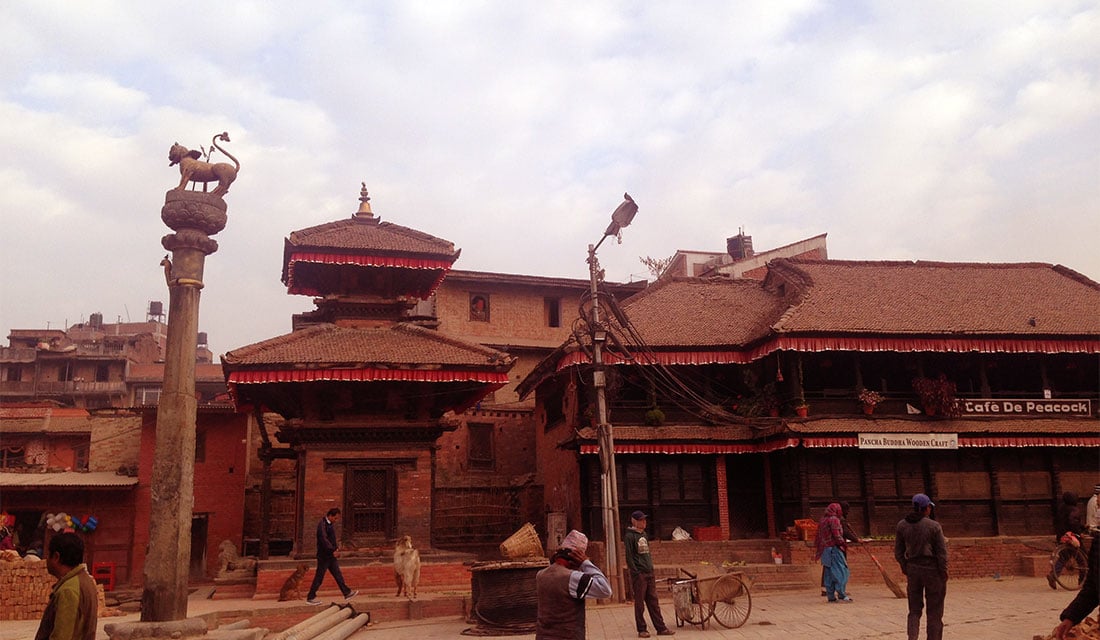
















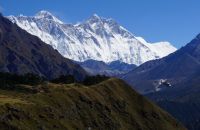
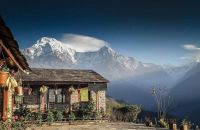
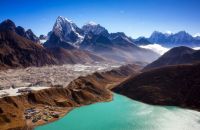
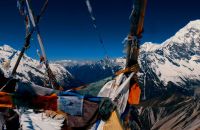
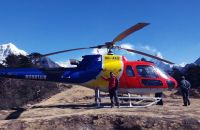
















Recent Comments